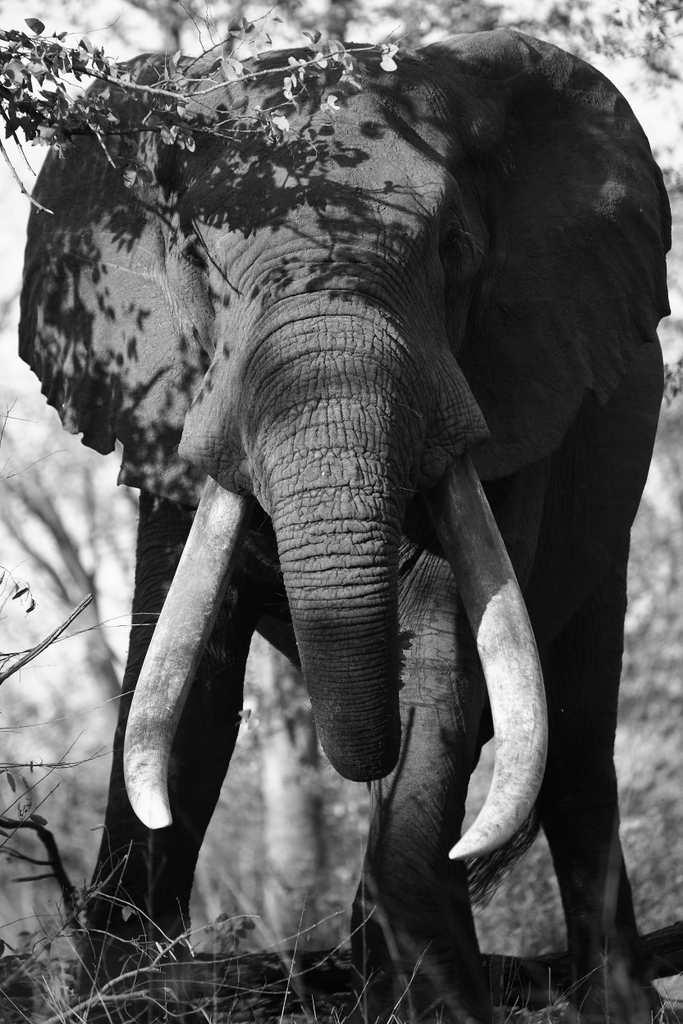
GUEST POST by Kim Wolhuter, wildlife filmmaker and photographer
I was walking in the sandy riverbed of the Chiredzi River in southeastern Zimbabwe towards the end of the dry season. There’s always a lot of activity along the river and I find it a special place to walk. On the eastern bank, I spotted an elephant bull feeding, but all I could see was a prize view of his rear end – an image that looks like a nappy wrapped around a baby’s bum, although this was no baby. Just to the south of the elephant, there was a steep-sided gully, so I decided to follow it in order to get a better view.
I watched as the elephant stripped his last mouthful of leaves from a mopani tree and stepped around to move past it… and that was when he saw me. Without hesitation, he charged! He was only 15 metres away from me but I stood my ground, believing he wouldn’t come down into the steep gully. Thankfully I was right and as he stopped just short of the edge. And that’s when I saw his mighty tusks! Standing in this little gully with this huge pachyderm towering over me, his ivory reaching for the skies, was my introduction to Samanyanga – a true Malilangwe icon!

I hadn’t seen such an impressive elephant since the mighty tusker Tshokwane in the Kruger National Park in the 90s. Samanyanga’s ivory was already much the same weight as Tshokwane’s, but his tusks were beautifully evenly matched in length and shape. I believe that Samanyanga was truly one of the very few African elephant icons left in the world today. I couldn’t help myself and just had to film him.
It took me several days before I found him again. He was in the company of another bull feeding on the bank of the Chiredzi River. I drove over to where he was standing in the shade of a large Acacia tortilis tree. Such a gentleman, he obliged my company and continued to occasionally drag a trunk full of cool soil to toss over his back, under his belly and across his sides. Despite the giant that he was, he did this with such elegance.
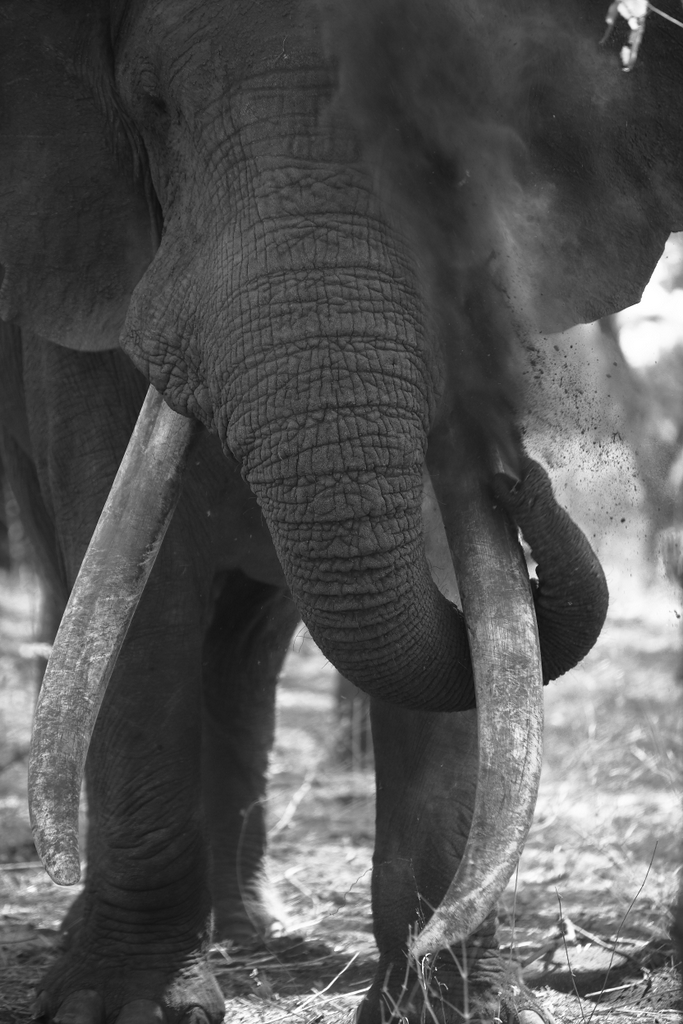
He moved with ease and the demeanour of a true idol. As he sauntered down the riverbank his head swayed from side to side under the full weight of his majestic ivory. With more reason than a swaggering football player, Samanyanga was entitled to stride in his glory. As he drank from the river his seemingly endless tusks extended deep into the water. A crocodile lay peacefully on a sandbank only metres away as the gentle giant waded through the river to the other side. As he hauled his himself up the riverbank the setting sun glowed a perfect gold on his beautifully balanced pair of tusks.
I travelled home relishing the privilege I had of spending the whole day with him.
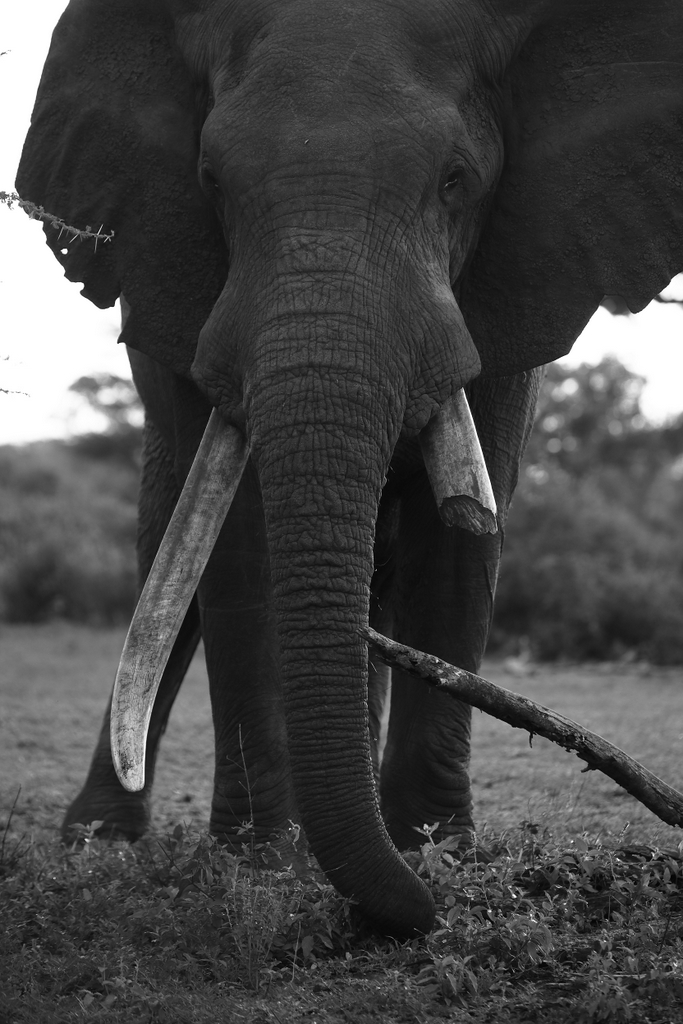
Samanyanga remained elusive. He would be spotted every now and then, but when I actively searched I would never find him. It was only several months later when we received a report about a large tusked elephant with one of its tusks freshly broken. We immediately set off to find this elephant, and just after sunset we spotted him – it was Samanyanga. Not only was his one tusk broken but he also seemed to have lost his dignity and composure.
We sat in the vehicle in the darkness as he slowly grazed towards us. Taryn, my wife, was concerned that he was getting too close (he was only centimetres away at one point). Of that I was certain, but starting the car right then would have startled him. We sat silently as he pulled grass tufts from the loose earth, dusting them on the ground before eating them. He was very obliging and half-an-hour later he eventually moved far away enough for to me to start the car.

I followed up on Samanyanga the next morning. He was now in a very different mood and I was not about to get in his way. He was striding east towards another bull. The other bull was pretty much the same size as him but his tusks were a lot smaller. As Samanyanga approached the bull turned to challenge him. A fallen tree lay between them and in a display of strength they tossed it around. Then with their heads held high they clashed. It was an intense but brief encounter and soon both elephants backed off. That was the end of their challenge and they went their separate ways. I wondered if they hadn’t met before and perhaps that’s how Samanyanga’s right tusk had been broken.
Samanyanga spent the next few weeks hanging around this area – so much out of character – and then the rains arrived and he disappeared again. He was seen a few times to the south after that but never come back up here.
Eventually, there were no new reports coming through of his location, but then one day scouts on patrol reported a carcass of a one-tusked elephant.
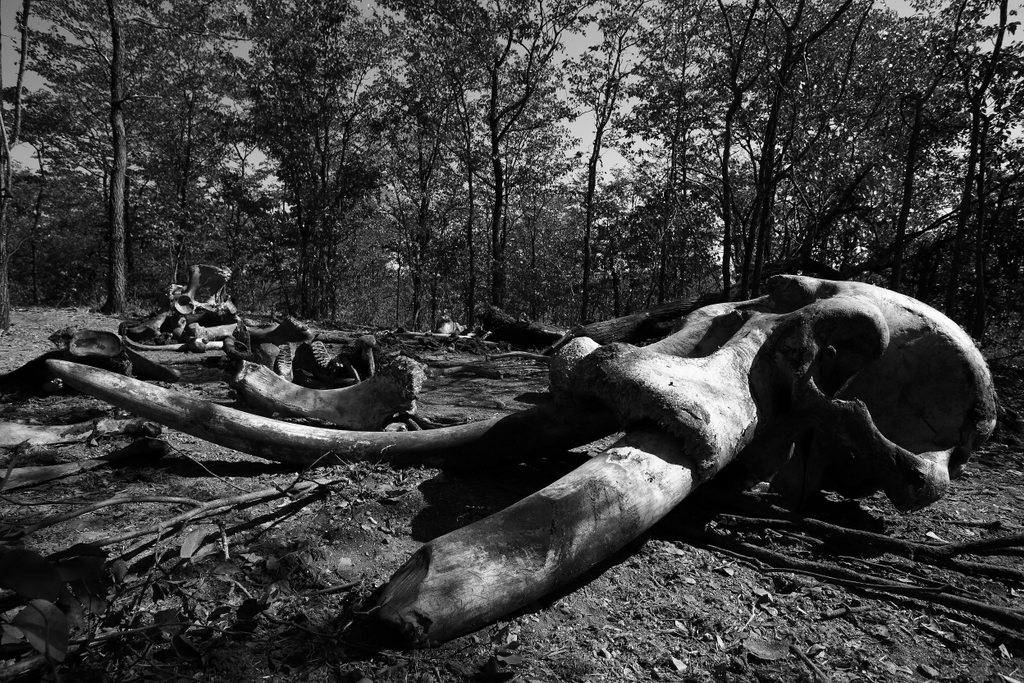
Upon hearing this news I knew I had to get to the carcass. I had visions of it being Samanyanga and that was something I personally wanted to confirm or… rather not. Just getting to the location was tough, and driving the last 500 metres off-road took me half-an-hour of negotiating through thick vegetation.
Eventually, I arrived at a clearing littered with bones. One huge tusk lay curved on the ground reaching for the heavens and the other was broken about a foot from the base. There was little doubt that this was Samanyanga. His tusks were incredibly thick and truly impressive, totally dwarfing me.
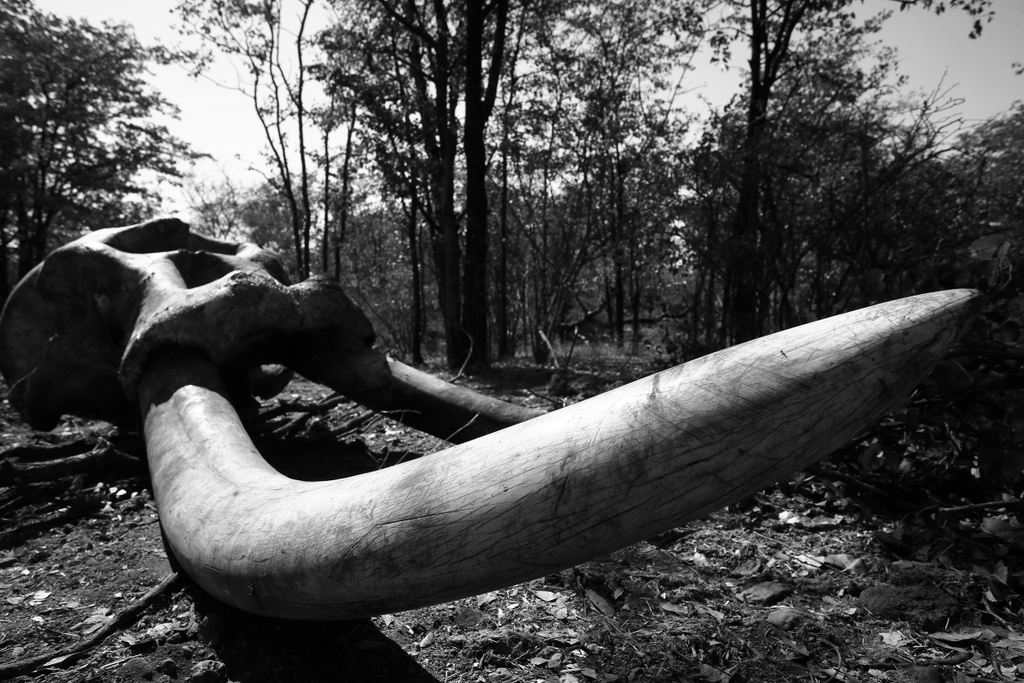
Bones littered the clearing, but nothing else was left of Samanyanga. Even the smell of rotting meat was all but gone. I reflected back on the first day I met him… those massive tusks towering over me. But now, in that clearing, those massive tusks laid at my feet. I tried to find clues to the cause of his death but the scavenging hyenas and vultures had left none. For Samanyanga, I’d like to believe he died a noble death – fighting.
His legacy will live on, his ivory will be forever.
To comment on this story: Login (or sign up) to our app here - it's a troll-free safe place 🙂.![]()






